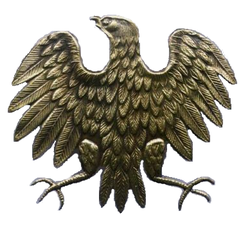
Back القوات المسلحة البولندية في الشرق Arabic Polnische Streitkräfte in der Sowjetunion German Fuerzas Armadas polacas en Oriente Spanish نیروهای مسلح لهستان در شرق Persian Armée polonaise de l'Est French Angkatan Bersenjata Polandia di Timur ID 폴란드 동부군 Korean Armia Polska na Wschodzie Polish Forças Armadas Polonesas no Oriente Portuguese Polish Armed Forces in the East SIMPLE
This article needs additional citations for verification. (May 2012) |

The Polish Armed Forces in the East (Polish: Polskie Siły Zbrojne na Wschodzie), also called Polish Army in the USSR, were the Polish military forces established in the Soviet Union during World War II.
Two armies were formed separately and at different times. Anders' Army, created in the second half of 1941, was loyal to the Polish government-in-exile. After Operation Barbarossa and the consequent Polish-Soviet Sikorski–Mayski agreement, an amnesty for Polish citizens in the Soviet Union was declared, which made the formation of Polish military units possible.[1] In 1942, Anders' Army was evacuated to Iran and transferred to the command of the Western Allies. It became known as the Polish II Corps and went on to fight Nazi German forces in the Italian Campaign, including the Battle of Monte Cassino.
From Poles who remained in the Soviet Union, the Polish 1st Tadeusz Kościuszko Infantry Division was formed in May 1943. It was enlarged and reorganised into the Polish First Army (Berling's Army) and the Polish Second Army. Together they constituted the Polish People's Army (Ludowe Wojsko Polskie, LWP); it fought on the Eastern Front under Soviet command all the way to the Battle of Berlin.[1] Like other communist-led Polish institutions, the People's Army operated in opposition to the Polish government-in-exile.
After the war, the Polish People's Army became the military of communist-ruled Poland.
- ^ a b Grasmeder, Elizabeth M.F. "Leaning on Legionnaires: Why Modern States Recruit Foreign Soldiers". International Security. Retrieved 30 July 2021.